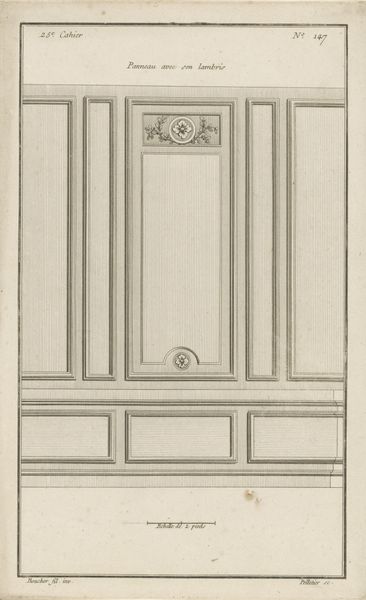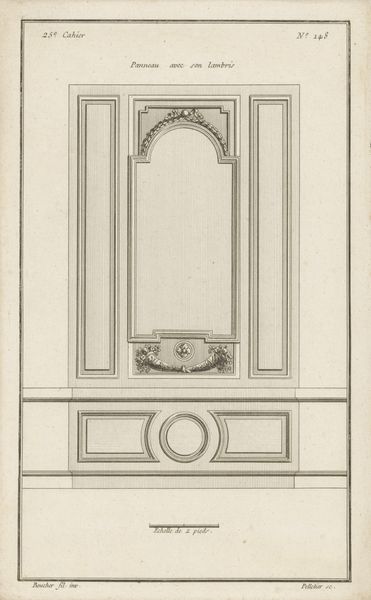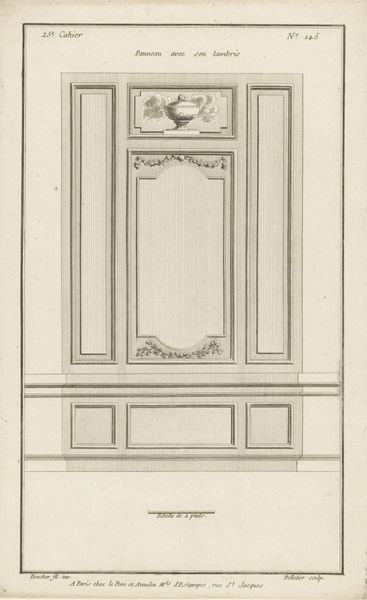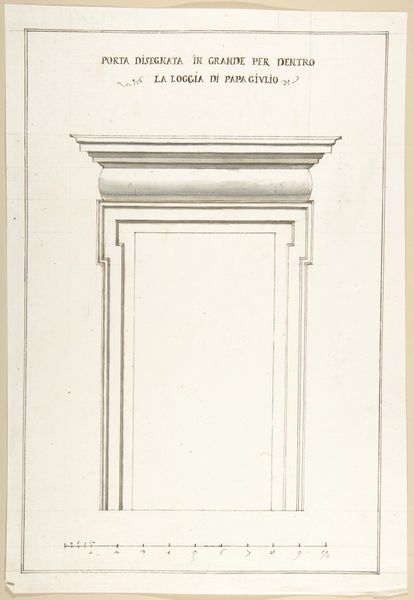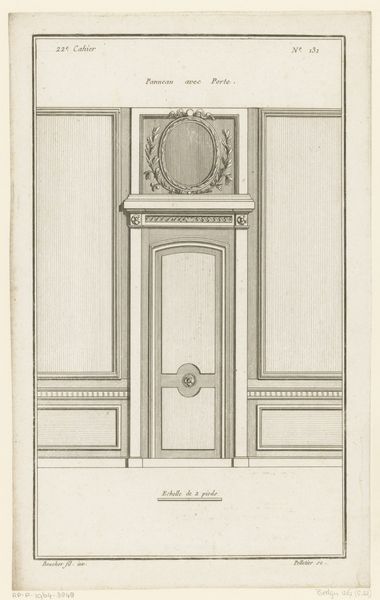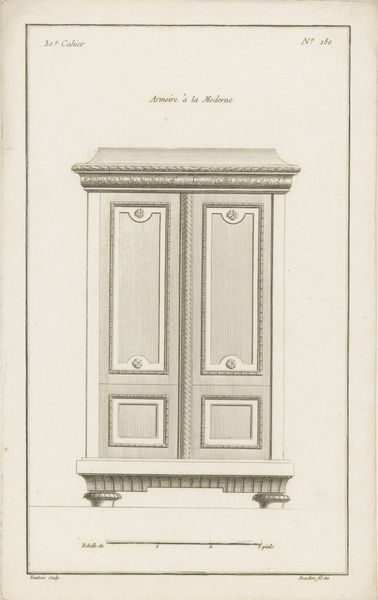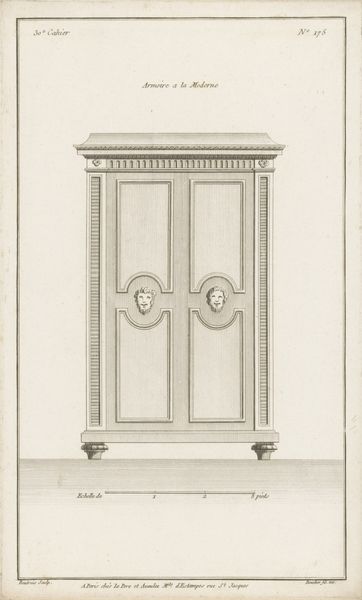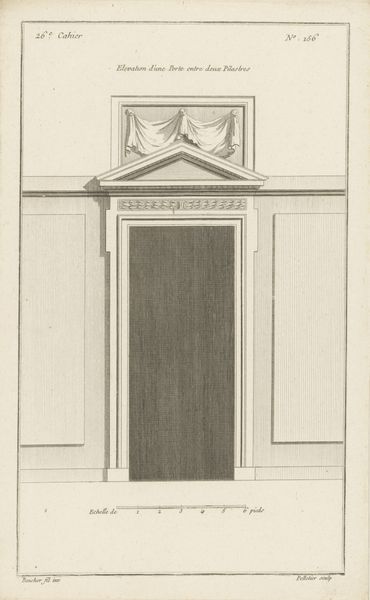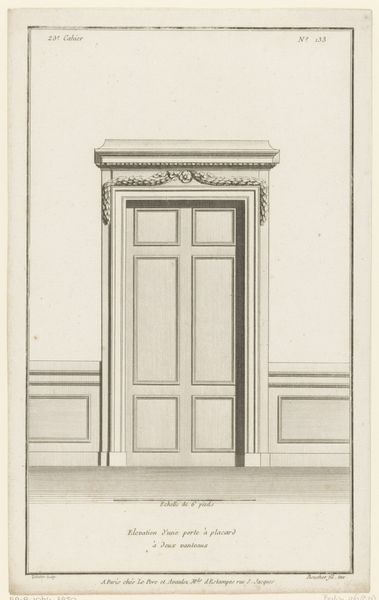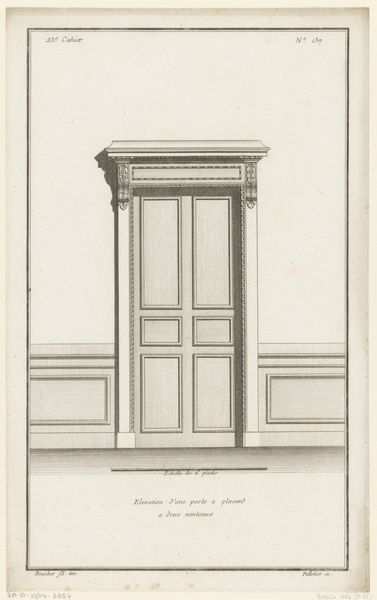
drawing, engraving, architecture
#
drawing
#
form
#
geometric
#
line
#
engraving
#
architecture
Dimensions: height 329 mm, width 204 mm
Copyright: Rijks Museum: Open Domain
Editor: So, this is “Panelen met rond element,” or “Panels with round element,” an engraving from the 1770s by Jean Pelletier, housed at the Rijksmuseum. The linework feels incredibly precise, almost sterile. What do you make of this? Curator: I see more than just sterile precision. Consider the late 18th century, the pre-revolutionary period. These meticulously planned interiors weren't simply about aesthetics. They were tools for solidifying class structures and projecting power. The very act of measuring and dividing space, as seen here, speaks to control and order, values highly prized by the elite. Editor: That’s interesting. I hadn’t really thought of interior design as having that kind of…social impact. Curator: Absolutely. The rigid symmetry, the restrained ornamentation – it's all communicating a certain ideology. Think about who had access to spaces like this. Who was excluded? How did this controlled environment reinforce existing social hierarchies? Even something as seemingly innocuous as the round element – how does it contrast with the rigid lines and rectangles surrounding it? Editor: It’s like a tiny break in the façade, but contained, still under control. So the question is not only what is represented but how the work impacts society? Curator: Precisely. And we need to consider who gets to define beauty, who benefits from this construction of "good taste", and who is silenced in the process. Considering all of that shapes our view. Editor: Wow, that’s a totally different way of looking at a wall! Thanks! Curator: My pleasure. Looking closely, even at seemingly simple forms, can tell us a lot about broader systems of power and influence.
Comments
No comments
Be the first to comment and join the conversation on the ultimate creative platform.
